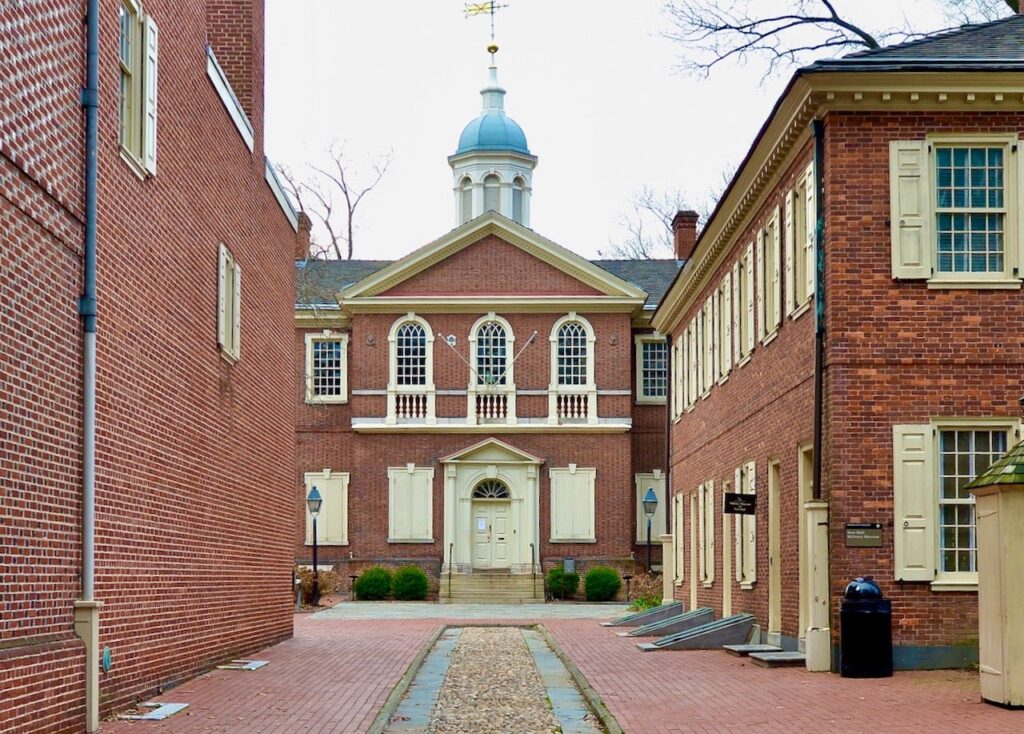The First Continental Congress convened in Philadelphia on September 5, 1774, marking a pivotal moment in American history as the colonies banded together in defiance against British tyranny. This gathering not only served as an early platform for significant figures in the journey toward independence but also underscored the unity among the colonists amidst rising tensions with the British government. Notable attendees included prominent Founding Fathers such as John Adams, Samuel Adams, Patrick Henry, George Washington, and John Jay, all of whom played crucial roles in the American Revolution.
The backdrop for this momentous meeting lay in the escalating conflict between the American colonies and the British Parliament, particularly with the city of Boston at the forefront. The Boston Tea Party in December 1773—where colonists protested against oppressive taxes by discarding British tea into Boston Harbor—had incited fierce retaliation from Parliament. Consequently, the introduction of the Intolerable Acts in May 1774 further inflamed colonial outrage by shutting down Boston’s port, revoking the Massachusetts charter, and curtailing local governance. These actions not only sparked outrage in Massachusetts but also reverberated throughout the other colonies, stimulating a collective desire for a unified response.
The realization of the threat posed by Britain’s unrelenting capacity to impose punitive measures without representation ignited a sense of urgency among the colonial leaders. As noted by George Washington’s Mount Vernon, colonists rallied in support of Massachusetts, demonstrating remarkable solidarity across North America. By the late spring of 1774, nine colonies had called for the first Continental Congress, with Virginia’s Committee of Correspondence credited for initiating the invitation. This urgency transformed the gathering into an assertion of American autonomy against what was increasingly seen as oppressive British rule.
A significant send-off took place in Boston for the delegates before their journey to Philadelphia. Chronicled by historian David McCullough, the departure on August 10, 1774, was marked by a sense of triumph and festivity, despite the watchful eyes of British troops. Delegates were met with enthusiastic welcomes, celebrations, and prayers as they traveled across towns. By the time they arrived at Carpenters’ Hall, the spirit of unity and resolve was palpable among the 56 delegates from 12 of the 13 original colonies, as Georgia opted out of participation.
However, the Congress faced internal divisions regarding how to respond to British injustices. Some delegates leaned towards more confrontational strategies, such as the Suffolk Resolves, while others advocated for non-violent protests, standing behind the Declaration of Rights. Ultimately, despite these differences, the Congress managed to produce significant outcomes with lasting impact, illustrating their commitment to collective action.
One of the most daring decisions taken by the Continental Congress was the adoption of the Suffolk Resolves on September 17. These resolutions urged Massachusetts to boycott British imports, renounce allegiance to the monarchy, and stockpile military supplies in defense of their rights. John Adams reflected on this historic day with immense pride, exclaiming, “This was one of the happiest days of my life,” signaling his belief in collective resistance against British oppressors.
The tensions precipitated by the actions of the Continental Congress eventually led to armed conflict. The British Redcoats marched toward Lexington and Concord on April 19, 1775, aiming to confiscate the colonial military stockpile. In what would become the first military engagement of the American Revolution, they encountered the Massachusetts Minutemen, resulting in a bloody confrontation. This marked the official beginning of the Revolution, significantly advancing the colonies’ quest for independence.
Subsequently, a Second Continental Congress convened in 1776 as the war for independence progressed. This Congress would ultimately formalize the separation from British rule with the Declaration of Independence on July 4, 1776. The actions stemming from the First Continental Congress laid the groundwork for a new nation committed to the principles of freedom and self-governance, changing the course of history forever. The events of September 5, 1774, resonate as a monumental step in the establishment of the United States and a testament to the enduring spirit of American democracy.



